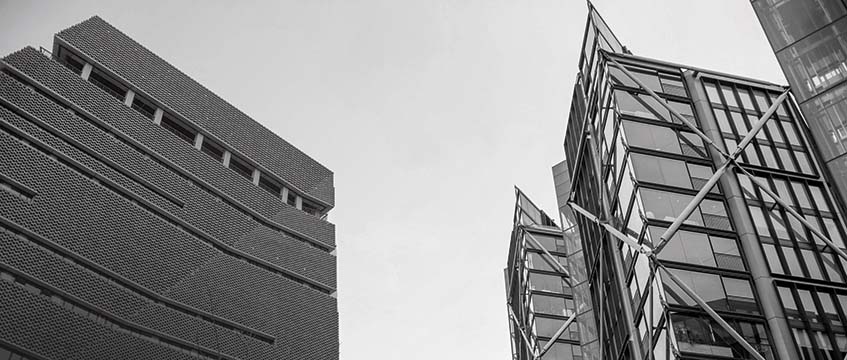This year, the Property Litigation Association challenged its members to answer, in 500 words, the question: has the recent Supreme Court decision in Fearn and others v Board of Trustees of Tate Gallery [2023] UKSC 4; [2023] EGLR 14 opened the floodgates for claims in nuisance based on overlooking?
Tom Dobson claimed first prize of a trophy, £2,000 and publication in EG, and received the award at the PLA’s joint summer party with the Property Bar Association. Judges Vivien King and Suzanne Lloyd Holt said Dobson’s entry stood out for his “original approach and highly entertaining analysis”.
Phil Spencer’s second place entry was praised as “thoughtful and wide-ranging”, while the judges said Philip Sheppard’s third-place essay offered “a good analysis, focusing on the intensity factor”.
First prize: Tom Dobson, associate, Farrer & Co
Springwatch starts next week. I cannot wait. Storylines set in the British countryside, from the dramatic to the mundane, caught on camera. Brilliant telly, but at what cost? Surely it’s visual intrusion into the lives of unwitting participants at an extreme level?
If Mrs Blue Tit, raising a family of 10 in front of an average daily audience of 3m, could read Lord Leggatt’s judgment in Fearn, she’d rightly scoff at what the residents of Neo Bankside deemed to be an “intolerable interference” with their freedom to use and enjoy their property.
Many of us, from Mann J to the chap with binoculars standing on the Blavatnik balcony, were indignant when a group of wealthy leaseholders complained about Tate visitors peering into what were effectively self-inflicted zoo enclosures. Viewing galleries are to be found in cities all over the world. They are of public interest and, anyway, the leaseholders chose to live in the flats.
But we were missing the point. Whether you live in a city-centre glass box or an underground bunker, it is socially unacceptable to establish a ticketed viewing gallery for people to goggle at your everyday life.
When the appellants bought their flats, they accepted that pedestrians gazing up might see them eating breakfast; art lovers momentarily distracted from Damien Hirst’s shark might catch them putting the washing out; that’s all part and parcel of high-density urban living. The Supreme Court rightly drew a distinction between those fleeting glimpses into strangers’ lives and the deviation from a building’s common use to deliberately encourage unsolicited gawping.
So while Mrs Blue Tit would probably have a case against the BBC under privacy law, as far as overlooking goes, a deluge of Fearn-inspired litigation is unlikely.
First, the decision dealt with liability, not remedy and any prospective litigants’ motivation will be dictated by what the High Court decides on legal redress.
Secondly, as Lord Leggatt acknowledged, occupiers of flats must accept that a degree of visual intrusion is inevitable and a Fearn cause of action in nuisance does not necessarily follow.
But I think the most important reason that the floodgates will remain closed is that similar incidences of landowners deviating from a property’s common use are rare because to do so departs from long-established societal norms.
John le Leche, the medieval fishmonger referenced by Lord Leggatt, was ordered to remove the watchtower he had erected to spy on his neighbour as it was deemed a substantial interference with the ordinary use and enjoyment of the neighbour’s land.
That decision laid the foundations for the socio-legal “rule of reciprocity” set out in Bamford v Turnley (1862) 3 B&S 66: give, take, live and let live.
And that’s the point – Fearn is the product of millennia of close-quarters human habitation.
Overlooking is inevitable but home life is sacred and landowners know (as Tate ought to have known) that exceeding the boundaries of normal use to breach that inner sanctum will not be tolerated at law.
Second prize: Phil Spencer, associate, Bryan Cave Leighton Paisner LLP
Has the recent Supreme Court decision in Fearn opened the floodgates for claims in nuisance based on overlooking?
In short, no.
By the time Fearn reached the Supreme Court, the question for determination was a narrow one, confined to whether the lower courts had erred in denying the claimants a remedy under the tort of private nuisance.
The majority judgment reviewed the existing law and found it had been incorrectly applied to the facts and a remedy was therefore due.
The key test was whether a neighbour was making “common and ordinary” use of their land, rather than making “unreasonable use” of it. In this case, the construction of a viewing gallery was not “common and ordinary” use of its land and a breach had occurred.
Given the Supreme Court neither overruled nor reinterpreted existing law, merely clarified how it should be applied, it seems unlikely any flood of new claims will follow owing to swathes of neighbours suddenly being judged to not be making common and ordinary use of their land.
In essentially preserving the status quo, Fearn perhaps kept firmly shut far bigger floodgates. The first instance decision ([2019] EWHC 246 (Ch); [2019] EGLR 15) makes clear that the understandable concern of the claimants was chiefly one of privacy (their Article 8 Human Rights Act 1998 claim also failed).
The case illustrates a long-standing problem with English Law and its lack of a clear and simple right to privacy, with claimants forced to try and “piggy-back” on other causes of action (eg nuisance or misuse of private information) to obtain a remedy.
Fearn was a missed opportunity for the courts to develop the law and provide an easier remedy for intrusion on privacy. In the coming years, this is apt to become an ever-greater problem – the rise of drones equipped with cameras and the fact almost everyone has a smartphone camera in their pocket, will surely lead to increased concerns over invasions of privacy on private land.
Everyone deserves a right to privacy on their own land – free not just from sustained “overlooking” as in Fearn, but also from more furtive and short-lived intrusions.
Private nuisance, restricted to uses of land, seems an unsatisfactory cause to plead for fleeting and difficult-to-police photography or recording originating from neighbouring land. Pleading trespass from an intrusive drone is fraught with similar problems.
The Supreme Court did reaffirm the point that: “Anything… which materially interferes with the claimant’s enjoyment of rights in land is capable of being a nuisance.”
There is, perhaps, still hope that the courts may yet develop more robust rulings to protect privacy more generally, including via the tort of private nuisance itself, beyond issues which debate a neighbour’s common and ordinary use of their land.
It will hopefully only be a matter of time before we see a test case arising from a drone or other camera intrusion resulting in someone being inhibited from enjoying the use of their own land in privacy.
Third prize: Philip Sheppard, senior associate, VWV
It’s curtains for claims for overlooking. Given the headlines and the opinion pieces which followed the Supreme Court decision in Fearn, one might be forgiven for thinking that the court had done something revolutionary, heretical, or just a little bit silly.
One might have supposed that the Supreme Court had created, or at least affirmed, a new cause of action for overlooking – an invitation to neighbours to squabble about balconies, blinds and full-height windows. But claims for visual intrusion are not new to the law. Nuisance claims involving nosy neighbours appear as early as the 14th century and have resurfaced from time to time in England and in other common law jurisdictions ever since. Why then, might the Tate decisions have caused such excitement?
The danger, loosed by the court at first instance, was to suggest that claims for nuisance require a free-ranging assessment of what may be reasonable in the give and take between neighbours.
This mistake is understandable: it is often said that nuisance is an “unreasonable” interference with property rights, or that a “reasonable user” will not be liable in nuisance. These convenient shorthands are easily mistaken for legal tests.
Such a broad and unprincipled approach could indeed have opened the floodgates for neighbours to argue about intrusions and privacy. Fortunately, that is not the law. The Supreme Court reminds us the law of nuisance is more focused than this. We are reminded of two points:
- First, a nuisance is a substantial interference with the ordinary use of the claimant’s land, by an extraordinary use of land by the defendant, taken in the context of the locality. Trifling annoyances, annoyances affecting extraordinary or sensitive claimants, or annoyances caused by an ordinary use of the defendant’s land, are not actionable.
- Second, the fear of visual intrusion is not protected. As a matter of policy, neither the mere presence of buildings (or, indeed, viewing platforms), nor the potential of a visual intrusion, is actionable at law. Only actual visual intrusions, of such duration and intensity as to be considered unusual in the context of the neighbourhoods in which they occur, can amount to a nuisance by overlooking.
Claims which meet these criteria ought to be extremely rare. Most visual intrusion will take the form of snatched glances from windows or from the street, as people go about their day-to-day lives. The Supreme Court has made clear that such intrusions are not a nuisance.
By issuing a clear reminder of the strict parameters of the law of nuisance, the Supreme Court will deter prospective litigants and their advisers from unmeritorious claims, and will provide a roadmap to defendants and courts to dismiss such claims at the earliest opportunity. Therefore, where the court at first instance may have inched the floodgates open, the Supreme Court has since slammed them well and truly shut.
To send feedback, e-mail newsdesk@eg.co.uk or tweet @EGPropertyNews











